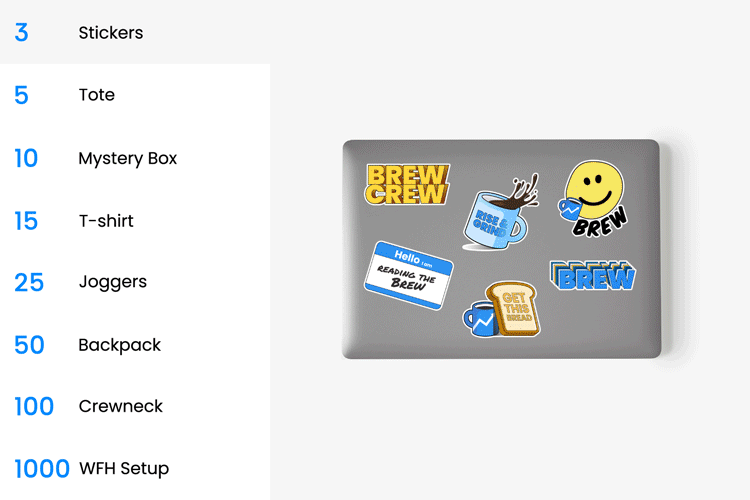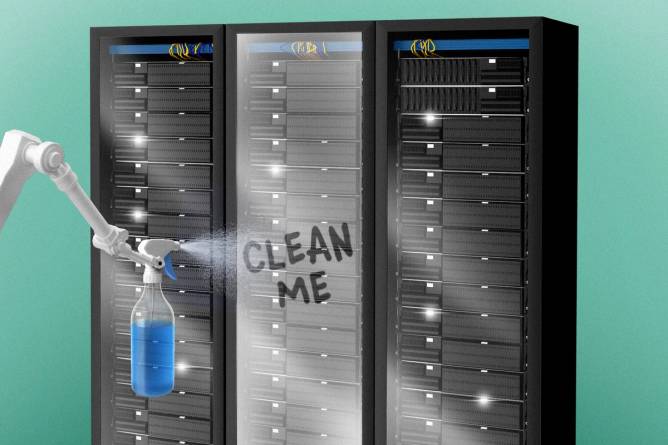Office Space/20th Century Fox via Giphy
Printers aren’t just jam-prone machines that frustrate IT pros and employees alike. These days, many are effectively giant computers, complete with hard drives and internet connectivity. The increasingly sophisticated nature of the printer calls for a checklist of security safeguards. The defenses—including firmware updates, network segmentation, and configuration policies—are especially important when the smashable, but not unhackable, printers end up on the bottom of the IT pro’s to-do list.
IT organizations today are focused on digital transformation and keeping pace with competition, Bryan Willett, CISO at the imaging and printing product provider Lexmark International, said. “When you talk about printers, it’s not top of mind for them. It’s not what drives probably the majority of their meetings every day,” Willett told IT Brew.
Testing, testing. Penetration testers and security researchers frequently point out printer-related attack possibilities. In January, the cybersecurity company Trustwave said it found a vulnerability in the Kyocera printer’s web application that “allows attackers to coerce authentication attempts to their own resources.”
Read more here.—BH
|
|
What do you look for in development talent? Does the list look something like this?
- senior-level software engineers
- available on demand
- aligned with US time zones
- strong English skills
If that checks the boxes for your dream team, here’s some good news: Code Labs can help you meet your match(es). They partner with orgs to find high-quality IT specialists, even for hard-to-fill positions.
Code Labs experts will handpick each specialist based on your unique goals and needs. Once they’re hired, you can manage the team in-house or outsource management to Code Labs.
Whatever you choose, their customer support processes ensure fast onboarding and accelerated time to value. Just ask their past clients, who easily shipped their projects on time and at a lower cost.
Reduce staffing costs without sacrificing quality. Learn more about Code Labs.
|
|
Smith Collection/Gado/Getty Images
23andMe is known for identifying your genetic background—not so much for detecting hacks.
According to a new breach notification filing to California’s attorney general’s office, hackers were accessing 23andMe customer data for months, from April to September 2023, before the company discovered the leak in October.
“Based on our investigation, we believe a threat actor orchestrated a credential stuffing attack during the period from May 2023 through September 2023 to gain access to one or more 23andMe accounts,” according to a letter 23andMe sent to affected users.
Family tree. The breach resulted in 14,000 user profiles being accessed by hackers. That, in turn, led to the compromise of 5.5 million relatives’ profiles and 1.4 million Family Tree feature profiles. The hack illustrates the danger of sharing such sensitive information, Iskander Sanchez-Rola, director of privacy innovation at cybersecurity-services provider Gen, told IT Brew.
Read more here.—EH
|
|
Gupshup
Chatting on the internet sure has come a long way. Remember the good ole days in the ’90s and 2000s, when users would log in to AIM and overuse basic emojis, lyrics to sad songs, and lots of BRBs? With the ascendance of AI, the internet is now shifting into a new era, which some have dubbed the “conversational internet.” Champions of this newer way of being online say it’s intended to be more intelligent, interactive, and convenient. And Gupshup CEO Beerud Sheth is betting it’s soon going to “take care of everything [you] need.”
Sheth co-founded Gupshup in 2004. The AI-powered platform allows companies to create and deploy chatbots via its chatbot studio, managing over 10 billion messages each month and powering six out of 10 B2C chats globally, according to its website. IT Brew recently caught up with Sheth to learn more about the platform and find out why he thinks messaging apps are the new browsers.
On the changing landscape of the internet
“So, firstly, our vision is that unlike the US tech ecosystem, which is heavily focused on the traditional internet, as you know it—web pages, browsers, and things like that—the other half of the world is growing in the tech ecosystem; is evolving in a very different way,” Sheth told IT Brew. “It’s all mobile first. Every user is using messaging apps on those mobile devices. And there’s a whole different kind of internet emerging, let’s call it the conversational internet.”
So, how will this affect IT professionals?
Keep reading here.—AF
|
|
TOGETHER WITH AMAZON WEB SERVICES
|
|
Curious about cloud computing? We’ve got just the thing to help you get started. Get ready for AWSome Day—a free half-day online conference held by AWS experts on Feb. 15. Learn how embracing cloud computing can bring cost-savings, speed, and agility to your org. Begin your journey to the cloud.
|
|
Francis Scialabba
Today’s top IT reads.
Stat: Double. That’s how much the UAE aims to increase the digital economy’s contribution to its non-oil GDP in the next decade, from 11.7% to over 20%. (CIO)
Quote: “The Ukrainian battlefield is saturated with aerial sensors that basically track and attack anything that moves.”—Samuel Bendett, a Russia analyst at the Center for Naval Analyses think tank, on the increase in robot-on-robot fighting in Russia’s war in Ukraine (Wired)
Read: Have questions about Kubernetes? Here are six things to keep in mind. (IT Pro Today)
Build your team: Gain access to senior-level software engineers available on demand. Code Labs hires, trains, and manages dev talent who will work as extensions of your own in-house team. Learn more.* *A message from our sponsor.
|
|
|
Share IT Brew with your coworkers, acquire free Brew swag, and then make new friends as a result of your fresh Brew swag.
We’re saying we’ll give you free stuff and more friends if you share a link. One link.

Your referral count: 2
Click to Share
Or copy & paste your referral link to others:
itbrew.com/r/?kid=9ec4d467
|
|
|









